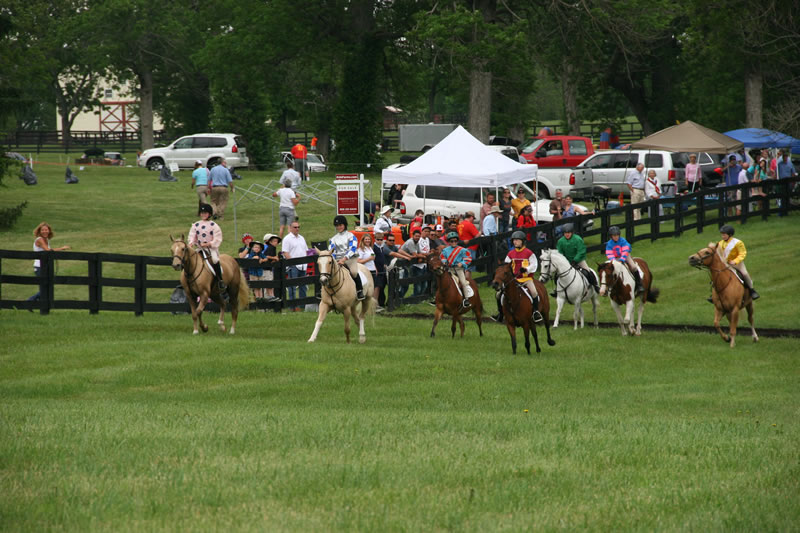Think back 50 years. Imagine nearly 2,000 people standing in the pouring rain, watching the inaugural running of the High Hope Steeplechase. The thrill of hearing horses whoosh through the brush jumps and the pounding of hooves as they hit the ground and reached out for the next stride was exhilarating. While steeplechasing was commonplace in the northeast and in Europe, it was relatively new to the Bluegrass Region. It didn’t take long for Kentuckians to realize why it is called the “sport of kings”.
Dr. James Holloway and Mr. Doug Davis along with Dr. John Griggs, Mr. Howard Tilson and Mr. Tom Rankin formed the Lexington Steeplechase Association in 1966. They combined their passion for racing and horses with hard work and dedication, and as a result High Hope Steeplechase was born. Doug Davis offered his farm and with it came the name High Hope. Dr. Holloway worked to secure National Steeplechase Association sanctioning for their four-race card, as well as purse money. Everyone pitched in to organize and setup the first race day. Workers on Mr. Davis’ farm built jumps, arranged seating, and flagged the course.
According to The Woodford Sun, the course was “slippery on top due to overnight rain but had a firm base.” That didn’t stop owners and trainers coming from Alabama, Ohio, Tennessee and Kentucky to compete in the Jay Trump, the Hamburg, the Shawnee and the Lane’s End races for a purse structure of $4,500. Mrs. Stephenson LeBlond sponsored the first Jay Trump timber race, named in honor of the “Cinderella Chaser” she purchased as a 3 year old for $1,250. His career included two Maryland Hunt Cup wins, the Maryland triple crown of timber racing and in 1965 Aintree’s Grand National. He was retired in 1966 to Mrs. LeBlond’s farm in Cincinnati. Jay Trump died at the age of 31 and is buried at the finish line of the High Hope course at the Kentucky Horse Park. He is still honored with yellow roses on his grave in our winner’s circle. The other races were sponsored by local horse farms, hence the names.
High Hope saw continued success at High Hope Farm for seven years, until Mr. Davis sold his farm on Payne’s Mill Road. At that time, under the direction of Dr. Holloway, High Hope was moved to the Kentucky Horse Park where it continues today. Dr. Holloway selected the site and designed the course. He negotiated funding and oversaw building the course. Racing continued to grow and prosper. In 1978, Dr. Holloway’s involvement in the World Three-Day Event caused him to turn over the reins of High Hope to Dr. John Garden. Under Dr. Garden’s direction, High Hope continued to prove itself as one of the mid-west’s premier race meets. Since 1993 High Hope has functioned under the direction of the High Hope Steeplechase Association Inc. and its Board of Directors.
Since its inception, High Hope has been recognized as a major donor to local charities. For many years, the Bluegrass Boy’s Ranch and the University of Kentucky’s Children’s Cancer Research Foundation were the primary recipients of High Hope’s profits, and many other charities benefited from High Hope’s support over the years. Today we continue the tradition of charitable giving, supporting the Kentucky Horse Park Foundation and Central Kentucky Riding for Hope in 2016.
As spring comes around each year, we prepare for another race day. This year marks the forty-eighth running of the High Hope Steeplechase and we are honored to carry on the racing tradition started by the Lexington Steeplechase Association 50 years ago.




Comments